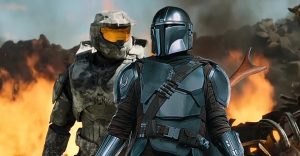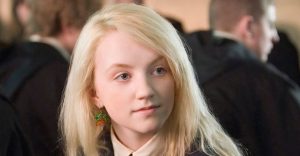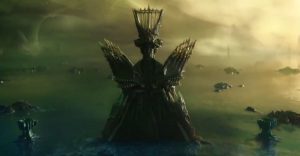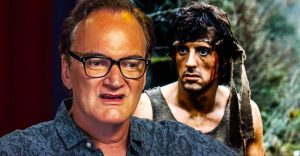Avatar: Top 10 Best Concepts That Never Made It To Air
Avatar: The Last Airbender creators Bryan Konietzko and Michael Dante DiMartino put together the ultimate fan-pleasing art book in 2020, titled The Art of the Animated Series. It condensed the sweat, hard work, and sheer talent that went into the series, and it gave a glimpse into the concepts that were either abandoned or re-worked during the creation of Avatar: The Last Airbender.
Out of the many behind-the-scenes details they disclosed, a few certainly stand out, and they would have drastically altered the series if they had been included in the final production.
10 Iceberg Energy Ball

It wasn’t possible in the final production, but creators Konietzko and DiMartino had a clear vision of what they wanted Aang’s suspension in the iceberg to look like. And it didn’t exactly pan out this way in the end.
According to the artbook, the glowing mass that surrounded Aang and Appa was supposed to represent a ball of swirling energy. They wanted Aang to be circling around in the energy when the iceberg finally surfaced, but given the severe animation schedule, there just wasn’t enough time or resources to make it happen. It’s too bad because it really does look like Aang is frozen solid, which just wasn’t the visual they wanted.
9 “Planet” Avatar

Konietzko mentions that early on in the creative process, he initially visualized the Avatar spirit as a manifestation of the planet. In that, Aang would be a literal embodiment of something akin to “Mother Nature.” In reality, of course, they went in a completely different direction, and it ended up paying off big-time.
A “planet” Avatar wouldn’t fit into the world they created, as the series was much more cosmic and intangible. The only visualization of the “spirit” of Aang was the white glow, and it’s lucky they left the concept open as the Avatar spirit ended up being a major plot point in the spin-off The Legend of Korra.
8 Azula’s Phoenix Armor

Perhaps the fandom is lucky this concept never made it to air. But for the Azula fans out there, it probably hurts that they weren’t able to see the character sporting this menacing outfit. With a fiery red color scheme, spiked grooves, and an impressive helmet, the concept really illuminates what she may have looked like if Ozai had allowed her to raze the Earth Kingdom with him.
It doesn’t fit with the golden, more muted tones of Ozai’s phoenix armor, and it’s obvious the creators went in another direction plot-wise, but at least this drawing exists. It’s really something.
7 Sifu Iroh

The fandom is very, very lucky that the creators changed their minds on this one. Uncle Iroh was one of the most lovable characters of the series, but he began conceptually as more of a mentor figure to Zuko. He would have been called “Sifu” Iroh, a respectful term for a master, and though his personality would have been similar, the series would be starkly different.
Zuko and Iroh’s relationship was a core to Avatar, and it was the most complex and fleshed out one of the entire show. Sifu Iroh just doesn’t have the same ring to it, and Zuko would never have gotten to where he ended up without his loving uncle. Needless to say, this was an important concept to change.
6 Appa’s Horns

Although Appa’s final design has become iconic and classic in its own right, the creators had a different vision in mind for his horns when they were first visualizing the show. Konietzko in particular fought hard for this unaired concept, as he loved the idea of Appa having curled horns.
Thankfully, the animation would have been far too complex if they went with the initial design. They were forced to change them to the straighter version of the horns that aired, but everyone is better for it, as Appa just wouldn’t have been the same.
5 The Bison Herd

Apparently, Konietzko and DiMartino had a bit of a tussle when it came to this one. Konietzko fought for the concept of Aang herding a group of bison along the sky, but, as DiMartino pointed out multiple times, there just wouldn’t be any space to put them in each episode.
They eventually whittled it down to just a couple of sky bison, and then, of course, to just the one. And Konietzko agrees that the show is much better off with the aired concept. Aang and Appa’s bond was a huge part of the series, and there wouldn’t have been that level of intimacy with a group of 20 or so animals, especially given the power and size of these Avatar creatures.
4 Zuko’s Tiny Ponytail

Zuko’s character design went through quite a lot of changes during the conceptual process. His story arc was generally always the same, but his look undertook a variety of iterations before his final design in “The Boy in the Iceberg.” And tiny ponytail was one of them.
The hairstyle makes more sense when paired with his outfit from the unaired pilot, as it was meant to accompany the more samurai-inspired design of his initial wardrobe. However, in the end, his long ponytail fit more with the style of the series, and it provided a more dynamic feel to the animation whenever it would sway in the wind.
3 The Red Spirit

In the artbook, Konietzko explains that Zuko’s Blue Spirit alter ego was actually inspired by a Chinese Nuo mask that he found, though he simplified the design for the animator’s sake. And, it’s revealed that the Blue Spirit wasn’t always blue. He was originally red.
This was a major shift from the final character design, but the creators have a good explanation for the change. It was just too Zuko. Everything about him from his scar to his armor was some form of red, and they wanted it to be a big surprise when it’s revealed that Zuko saved Aang in the fan-favorite “The Blue Spirit” storyline. The blue was much more of a contrast, and the creators agree the color change was the best decision.
2 Momo-3

Momo was one of the first characters ever imagined by the creators, but his design couldn’t have been more different from the final version that aired in “The Southern Air Temple.” Avatar was originally more of a sci-fi concept, and Momo’s original name fit the part, as he was affectionately called Momo-3.
Part robot, part monkey cyclops, his design was much more bizarre and other-worldly than his final cute lemur self. He even had an arrow on his head, which Konietzko explains was eventually transferred to Aang, and it’s quite a departure from the Momo that the fandom adores today.
1 Aang’s Mecha Design

Given that Avatar was conceived as a more “mecha” inspired show, it makes sense that Aang’s initial design was much more blocky and technology-based. With a strange metal staff, huge boots, and robot-like gloves, it’s a major shift from the more fantastical, Asianic style that came to characterize the Avatar world.
The creators explain how Aang’s design naturally shifted with the changes to their ideas about the series and the more Miyazaki-inspired animation they wanted, and it makes perfect sense. His final look has become iconic to Avatar, and this unaired concept is now foreign compared to the finished style of the show.
About The Author
















